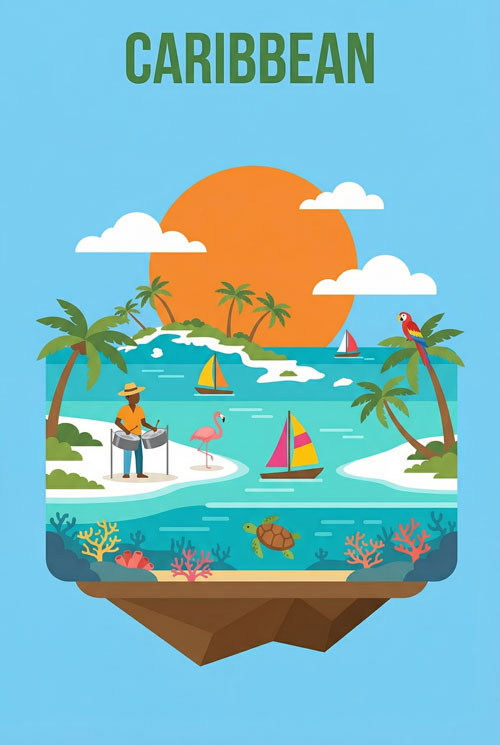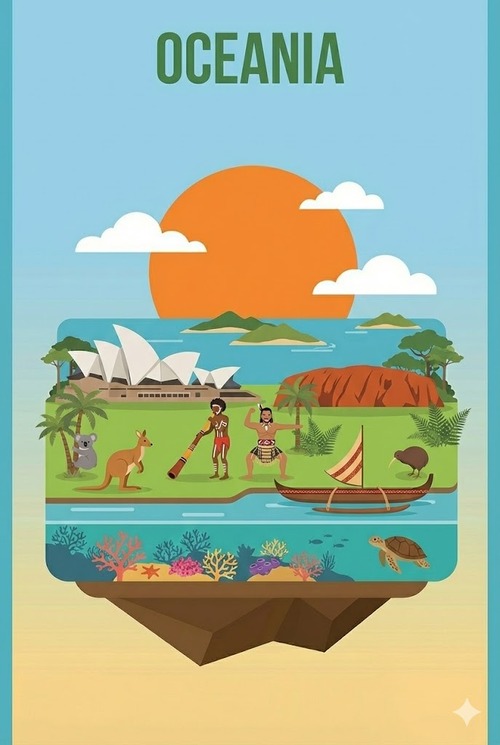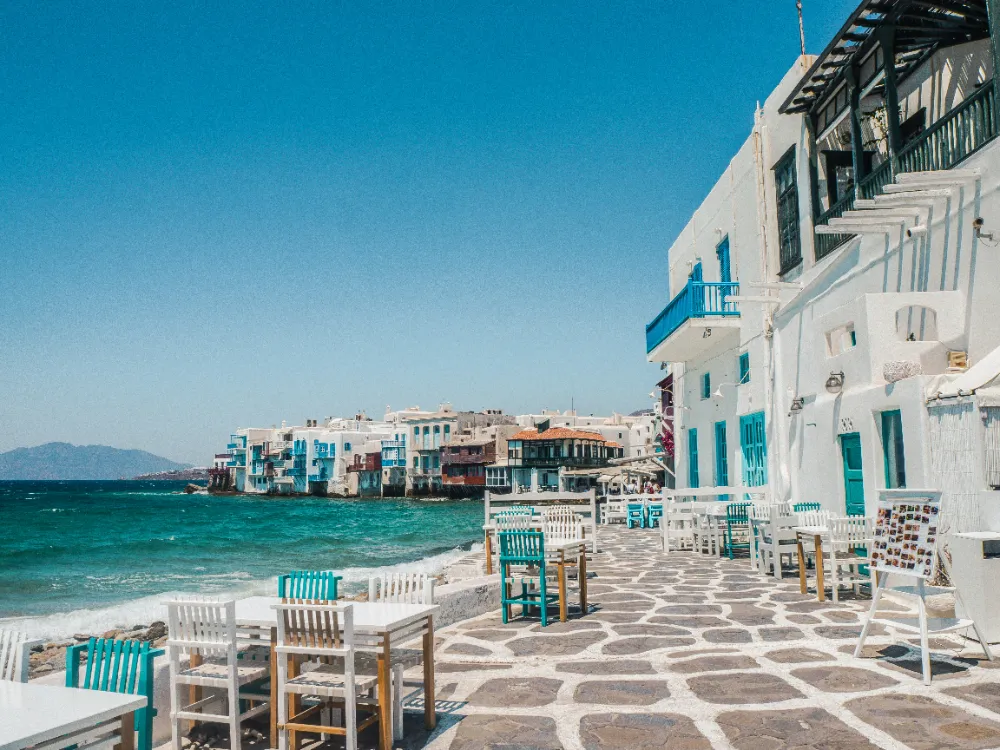Uncategorized
The Best Greek Islands for Families
Planning a trip to Greece with kids feels overwhelming.
With 227 inhabited islands scattered across the Aegean and Ionian seas, where do you even start?
This guide breaks down everything you need to know about the best family-friendly Greek islands, from the laid-back beaches of Naxos to the medieval magic of Rhodes. We’ll cover the practical stuff (ferries, accommodation, restaurants) and the fun bits too. Ready to confidently plan your perfect Greek family getaway?
Which Greek Island is Right for Your Family?
Answer a few quick questions to find your perfect match
Why the Greek Islands Are Brilliant for Families
Before we dive into specific islands, let’s talk about why Greece works so beautifully for families with kids.
Greek hospitality toward children is genuinely extraordinary.
Unlike some destinations where kids are merely tolerated, Greece embraces young travelers wholeheartedly. Locals will coo over your baby, chat with your toddler, and slip your school-aged children free treats. Traditional Greek restaurants welcome families without batting an eyelid (late dining times, noise, and all).
The islands offer a perfect sweet spot: stunning beaches without the tourist hordes of Spain, fascinating history bringing Greek mythology to life, and enough variety to keep kids of all ages entertained. Whether you’ve got a curious toddler or a moody teenager, there’s a Greek island to suit.
Plus, the food situation is a winner.
Greek cuisine features plenty of kid-approved options (hello, chips and chicken souvlaki), but also gently introduces children to Mediterranean flavors. Most tavernas are happy to prepare simple pasta or adjust dishes for fussy eaters.
When to Visit Greece with Kids
Timing matters when you’re planning a family trip to Greece. The best time to visit Greece largely depends on your children’s ages and your tolerance for heat.
Late May to mid-June is glorious. The weather’s warm enough for swimming, flowers are blooming, and you’ll beat the summer crowds. School holidays haven’t started across Europe, so popular islands feel manageable.
September to early October offers similar benefits: warm sea temperatures, smaller crowds, and gorgeous autumn light. Plus, everything’s still open, unlike later in autumn when many family resorts and restaurants close for winter.
July and August are peak season for good reason (guaranteed sunshine and the warmest water). But be prepared: temperatures hit 35°C+, prices spike, and popular islands get properly busy. If you’re traveling with babies or toddlers who struggle in extreme heat, consider shoulder season instead.
Avoid November through March unless you’re planning a city break in Athens. Most island accommodation closes, ferry schedules reduce dramatically, and beach weather is definitely off the menu.
Planning Your Greek Island Adventure: How Many Islands?
Here’s where people often get ambitious and then regret things. Yes, Greek island hopping sounds romantic. But with kids? You need to pace yourself.
For a one-week trip: Pick Athens plus one island, or two islands maximum. Spend 3-4 nights in each place. This gives everyone time to settle, find your favorite beach, and relax. Constant packing and ferry travel with children is nobody’s idea of a holiday.
For two weeks: You handle Athens plus two or three islands comfortably. A classic route might be Athens (2 nights), Naxos (5 nights), Santorini (4 nights), and back to Athens (1 night). Or swap Santorini for Paros or Ios depending on your vibe.
Single island deep-dive: Honestly? This works brilliantly with younger children. Choose a bigger island like Crete or Rhodes and explore thoroughly. You’ll avoid the stress of ferry connections and luggage shuffling while still experiencing authentic Greece.
The golden rule: children under five do better with less movement. Older kids (8+) handle more frequent changes and might even enjoy the adventure of ferry hopping between neighboring islands.
Getting to Greece and Around the Islands
Most international visitors fly into Athens, which has excellent connections from the UK, Europe, and beyond. From Athens, you’ve got options:
Ferries run from Piraeus port (Athens) to most islands. Book tickets in advance through Ferryhopper or directly with companies like Blue Star Ferries. High-speed ferries cut journey times significantly (worth the extra euros with restless kids). Pack snacks, tablets, and motion sickness bands in case things get rough.
Domestic flights connect Athens to larger islands like Crete, Rhodes, Corfu, and Santorini. These save time but reduce the romantic ferry experience (though your kids probably won’t care).
Island hopping between nearby islands: The Cyclades islands are brilliantly connected by ferry. Getting from Naxos to Paros takes 45 minutes. Naxos to Santorini? Around two hours. Always check current schedules, as frequency varies by season.
Getting around each island: Larger islands like Crete require car rental. Smaller islands like Paros or Ios? You manage with buses, taxis, and the occasional rental car for beach days. Decide based on your comfort level and whether you’re happy carrying beach gear on public transport.
The 7 Best Greek Islands for Families
Right, let’s get into the good stuff. These islands balance family-friendly beaches, practical accommodation, and enough charm to make the trip memorable for everyone.
1. Naxos: The Family-Friendly Favorite
If you only visit one Greek island with kids, make this Naxos. Seriously. This is the best family-friendly Greek island, hands down.
Why? Start with the beaches. Agios Prokopios and Agia Anna offer shallow, calm water perfect for younger children. You walk out 20 meters and still be knee-deep. The golden sand is soft, beach bars provide loungers and shade, and the water stays warm through September. Further south, Plaka Beach stretches for kilometers with barely a soul in sight.
Beyond beaches, Naxos delivers variety. The main town (Naxos Town or Chora) has a proper castle district with winding lanes perfect for exploration. Kids love scrambling around the Portara, the massive marble doorway overlooking the harbor. The mountain villages like Apiranthos and Chalki offer a glimpse of traditional Greek life without feeling too staged.
Accommodation-wise, you’re spoiled for choice. Family rooms and apartments are plentiful and affordable compared to nearby Santorini and Mykonos. Many places have pools, kitchenettes, and separate sleeping areas (crucial for early bedtimes when you want evening peace).
Getting to Naxos from Athens takes 3.5-5 hours by ferry (depending on the type) or 40 minutes by plane. Once you’re there, rent a car for maximum flexibility, though buses connect the main beaches and villages reliably.
The food situation? Excellent. Naxos produces much of its own food (potatoes, cheese, meat), so tavernas serve genuinely delicious, affordable meals. Try Scirocco for elegant waterfront dining or To Elliniko for traditional cooking locals eat.
2. Crete: History, Adventure, and Beaches
Crete is massive (Greece’s biggest island), which means the best of both worlds: tourist infrastructure for families plus authentic Greek culture.
For families, focus on the north coast. Rethymno and Chania in the west combine beautiful Venetian old towns with excellent beaches. Heraklion in the center gives you access to Knossos Palace (kids genuinely enjoy this, like walking through a Greek mythology textbook) and family-friendly beaches like Ammoudara.
The beaches of Crete range from organized resorts to wild, empty coves. Elafonissi and Balos are Instagram-famous for good reason (turquoise water and pink-tinged sand are real). But they’re also busy in peak season. For calmer options, try Georgioupolis with its river meeting the sea, or Almyrida with shallow water ideal for toddlers.
Where to stay? Rethymno offers the perfect combination of old-town charm and beach proximity. Chania feels more sophisticated. Agios Nikolaos on the east coast provides a quieter base with lovely beaches nearby.
Crete works brilliantly as a single-island destination for two weeks. Rent a car and explore different regions: the beaches, the Samaria Gorge (older kids only, proper hiking), traditional villages, and archaeological sites. The variety keeps everyone engaged.
Transport note: Crete requires a car. The island’s too big to rely on buses, especially with children and beach gear. Book ahead in summer when rental cars sell out.
3. Rhodes: Medieval Magic and Sandy Shores
Rhodes combines everything: stunning beaches, a UNESCO World Heritage medieval Old Town, and proper water parks for when history fatigue sets in.
The Old Town of Rhodes is genuinely special. Kids love the massive fortified walls, the “Street of the Knights,” and the Palace of the Grand Master. Things feel like stepping into a fairy tale, minus the twee factor. Wander the atmospheric lanes, get intentionally lost, and stop for ice cream whenever anyone complains.
Beach-wise, the west coast offers calmer waters while the east gets windier (good for older kids who want to try water sports). Tsambika Beach features soft golden sand and shallow water (perfect for younger children). Faliraki is more developed with every facility imaginable, though things feel crowded in August.
Don’t leave without visiting Lindos. The clifftop acropolis is spectacular, though the climb up requires reasonable fitness (mules are available if needed). The village below is gorgeously whitewashed, and St. Paul’s Bay offers calm swimming in a stunning setting.
For water park action, the Faliraki Water Park delivers slides, wave pools, and enough to occupy kids for a full day. Sometimes you need the kind of guaranteed fun, especially with older kids.
4. Paros: Laid-Back Island Charm
Paros sits right in the heart of the Cyclades islands, offering the perfect postcard Greece vibe without Santorini’s crowds or prices.
The beaches here are genuinely lovely. Golden Beach (Chrisi Akti) on the east coast features excellent sand and water sports options for older kids. Kolimbithres in the north showcases bizarre granite rock formations creating natural sheltered pools (endlessly entertaining for children who love exploring).
The villages are Paros’s real charm. Naoussa, a fishing village turned resort town, manages to stay authentic despite its popularity. Parikia, the main port, has a brilliant labyrinthine old town and the famous white-painted church perched by the harbor.
Paros works brilliantly as part of a Cyclades islands itinerary. Things are a short ferry ride from Naxos (45 minutes), making island hopping stress-free. You get the Cycladic aesthetic (whitewashed buildings, blue domes, bougainvillea) without feeling like you’re in a theme park.
Accommodation leans toward small hotels and studios rather than big resorts. This suits families who prefer a more intimate, local experience over all-inclusive predictability.
5. Corfu: Lush Landscapes and Ionian Beauty
Corfu breaks the Cycladic mold completely. This Ionian island is green, lush, and feels more Italian than typically Greek (thanks to centuries of Venetian rule).
Why families love Corfu: the beaches offer variety, from long sandy stretches on the west coast to secluded coves in the south. Paleokastritsa is spectacular (dramatic cliffs, clear turquoise water, and caves to explore by boat). Sidari in the north features the famous Canal d’Amour rock formations.
Corfu Town deserves a full day. The UNESCO-listed old town combines Venetian architecture, French arcades (the Liston), and British influences (cricket, anyone?). Kids enjoy the imposing Old and New Fortresses with their ramparts and tunnels.
Where to stay: the northeast coast around Kassiopi offers excellent family-friendly beaches and accommodation. The west coast near Paleokastritsa provides more dramatic scenery. Avoid the package resort strip of the east coast unless this is specifically your vibe.
Transport-wise, Corfu’s large enough to warrant a rental car for exploring different regions, though buses connect major towns reliably.
6. Santorini: Do You Do This with Kids?
Let’s address the elephant in the room: Santorini is famously romantic, built on cliffs, and mostly geared toward honeymooners and Instagram influencers. But do families visit?
Yes, with caveats. Santorini isn’t the easiest Greek island to visit with young children. Those endless steps, clifftop hotels without pools, and sophisticated restaurant vibe don’t scream “family getaway.” But older kids (7+) absolutely enjoy things.
The secret: stay in the right place. Skip Oia and Fira (the clifftop villages) and base yourselves on the east coast. Kamari and Perissa offer proper beaches with black volcanic sand, shallow water, and family-friendly tavernas. Accommodation here includes hotels with pools and family rooms at much saner prices than clifftop suites.
Do visit Oia for sunset (arrive early, leave before the thing happens to beat crowds). Explore Fira’s lanes and the Archaeological Museum. Take a boat trip to the volcano (kids find this genuinely exciting).
Getting from other popular islands to Santorini is straightforward: ferries run regularly from Naxos (around 2 hours), Paros (3 hours), and Ios (45 minutes).
Bottom line: include Santorini for a couple of nights to say you’ve been, but don’t make this your only stop if you’ve got young children. Things work best as part of a longer trip where you’ve already done beach time elsewhere.
7. Ios: A Surprising Family Option
Wait, Ios? The notorious party island? Yes, hear me out.
Ios has successfully reinvented itself beyond its wild reputation. While Chora (the main village) still parties hard in summer, the rest of the island offers peaceful beaches and authentic Greek atmosphere.
Mylopotas Beach is the main draw: a gorgeous sweep of golden sand with calm, clear water. Things are organized with loungers and beach bars, but not overwhelmingly so. Manganari Beach in the south feels positively remote (turquoise water, soft sand, and barely anyone around).
Stay away from Chora’s party zone and you’ll have a lovely, low-key island experience. Several family-run hotels along Mylopotas cater specifically to families, with pools, family rooms, and tavernas serving simple, delicious food.
The real advantage of Ios? Things are perfectly positioned between Naxos and Santorini. You easily incorporate this into a Cyclades islands itinerary, giving you a quieter, more affordable alternative between two busier islands.
Traveling between Naxos and Ios with kids is straightforward. The ferry takes 45 minutes to an hour, making this one of the easiest island hops in Greece.
Making Things All Work
Greek Restaurants and Dining with Kids
Greek restaurants genuinely love families. Tavernas expect children, provide high chairs without fuss, and often give kids small portions or extra plates free of charge.
Greek dining times run late (restaurants don’t fill up until 9pm or later). As a family, this works to your advantage: arrive at 7pm and you’ll have the place to yourself, along with attentive service.
Kid-approved Greek dishes: souvlaki (grilled meat skewers), gyros (similar but wrapped in pita), pastitsio (Greek lasagna), moussaka (eggplant bake), and of course, chips. Greek salad without the feta goes down well with vegetable-resistant children. Don’t forget Greek yogurt with honey for breakfast.
Where to Stay: Hotels, Apartments, or Villas?
Apartments and villas offer flexibility: kitchens for breakfast and snacks, separate bedrooms so adults have evening peace, often more space than hotel rooms, and frequently cost less than hotels.
Hotels provide services: daily cleaning, breakfast included, pools with supervision, and no cooking responsibilities. Family resorts in destinations like Crete and Rhodes offer kids’ clubs and activities if this appeals.
Book accommodation in advance for July and August. Other months, you afford more flexibility, but still book at least a few weeks ahead for the best family-friendly options.
Beach Logistics
Greek beaches range from organized (loungers, umbrellas, beach bars) to completely wild. For families, organized beaches make life easier: you rent shade, buy cold drinks, and have proper bathrooms.
Water safety: most family-friendly beaches have calm, shallow water. Still, supervise children constantly. Greece doesn’t have a lifeguard culture like Australia or the UK. Bring water shoes for rocky or pebbly beaches, which are common on some islands.
Pack: high-SPF sunscreen (Greek sun is intense), UV-protective rash guards for kids, plenty of water, and snacks. Beach tavernas exist on most organized beaches, but they’re not always cheap.
Transport: Rentals, Ferries, and Logistics
Car rentals on islands: Essential for Crete and Rhodes. Useful for Naxos, Paros, and Corfu. Unnecessary for small islands like Ios or if you’re staying in one beach area.
Strollers: Bring an umbrella stroller if you’ve got toddlers. Greek pavements and cobblestones are notoriously bumpy, but you’ll need wheels for tired little legs. Skip the bulky travel system.
Ferry survival: Book cabins on overnight ferries for sleep. Daytime ferries need entertainment, snacks, and motion sickness remedies. High-speed ferries reduce travel time significantly and often have better facilities.
Sample Itineraries
One Week: Athens + Naxos
Perfect for first-time visitors with younger children.
Athens (2 nights): Fly in, recover from travel, one day seeing the Acropolis and wandering Plaka. Don’t overdo things. Save energy for the islands.
Naxos (5 nights): Ferry from Piraeus port (5 hours) or fly (40 minutes). Settle into beach life, explore the town and mountain villages, day trip to nearby Paros if you’re feeling ambitious.
This itinerary maximizes relaxation while ticking essential Greek experiences.
Two Weeks: The Classic Cyclades Loop
For families with older kids ready for adventure.
Athens (2 nights): Acropolis, Ancient Agora, one-day highlights tour.
Naxos (5 nights): Beach base, car exploration, proper downtime.
Ios (3 nights): Ferry from Naxos (1 hour). Different vibe, beautiful beaches, easy pace.
Santorini (3 nights): Ferry from Ios (45 minutes). Caldera views, volcano trip, black sand beaches.
Athens (1 night): Buffer before flying home.
This route keeps ferry times manageable while experiencing diverse islands. You easily swap Ios for Paros. Both work brilliantly.
Single Island: Two Weeks in Crete
For families who prefer depth over breadth.
Base yourselves in one spot (Rethymno or Chania) and take day trips: Knossos Palace, Balos Beach, Samaria Gorge, Elafonissi, mountain villages, Heraklion. You’ll barely scratch the surface but you’ll feel properly immersed in Greek life.
Stop Overpaying in Roaming Fees (Or Wasting Time Hunting for Local SIM Cards)
Overseas travel often means choosing between outrageous roaming charges or scrambling for local SIM cards the moment you land.
One drains your budget. The other steals time away from your holiday.
Smart travelers are now switching over to eSIMs.
eSIMs give you data at a fraction of the cost of what your telco charges for roaming and most modern phones have eSIM technology set up – (although you’ll need to check your phone’s compatibility here).
How eSIM4.com Works:
- Step 1: Pick your destination and data plan
- Step 2: Scan our QR code (takes 3 minutes)
- Step 3: Land overseas with instant local network access
No queues. No tiny plastic cards. No bill shock.
Just seamless, affordable data from the moment you land.
Stop letting phone companies raid your travel budget. Join the smart travelers who’ve already switched.
Get Your eSIM Now












